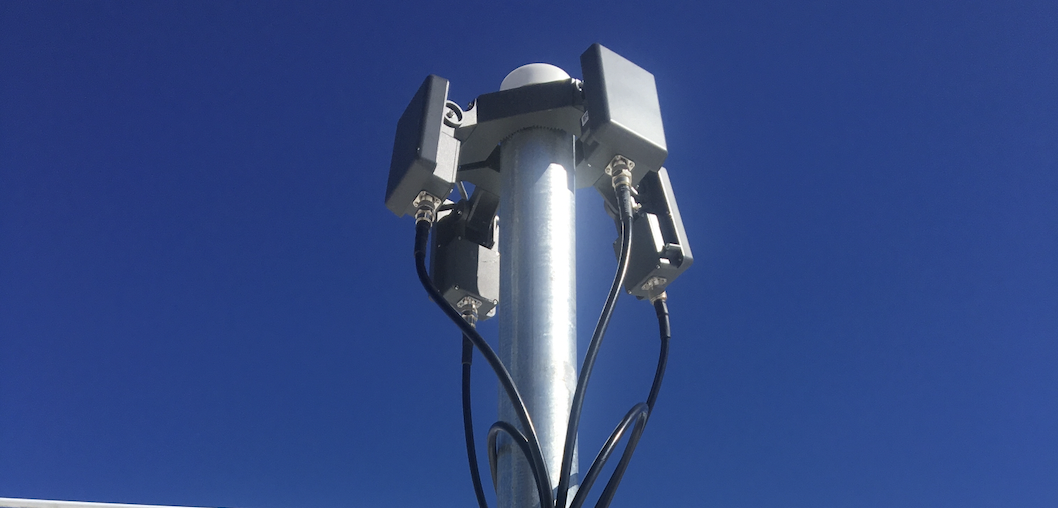This November, as part of Critical Infrastructure Security and Resilience Month, the Cybersecurity and Infrastructure Security Agency (CISA) released a landmark set of resources regarding Unmanned Aircraft Systems (UAS).
For years, critical infrastructure operators have asked, "What is the standard for airspace security?" With the release of the "Be Air Aware" campaign and three new comprehensive guidance documents, CISA has provided a clear answer: the time for ignoring airspace risk is over, and relying on a single detection method is no longer sufficient.
Here is your brief on the new federal guidance, why CISA is now recommending a "System of Systems" approach, and how Airsight provides the complete spectrum—from detection to authorized mitigation.
The "Be Air Aware" Brief: The Threat is Real
CISA’s latest release makes one thing clear: drones are no longer just a nuisance; they are a defined threat vector. While many flights are compliant, CISA warns that "criminals, terrorists, and hostile foreign actors have intensified their weaponization" of drone technology.
The new guidance categorizes the risks into clear pillars:
- Surveillance: High-definition cameras capturing sensitive operations or intellectual property.
- Cyber-Attacks: Drones equipped with tools (like Wi-Fi Pineapples) to exploit networks from the air.
- Physical Attacks: The potential for payload drops, chemical sprayers, or intentional crashes into critical assets.
To combat this, CISA is urging facility owners to move beyond passive observation and implement structured detection and response protocols.
Why a Single Sensor Isn't Enough: The "System of Systems"
Perhaps the most significant technical takeaway from the new guidance is CISA’s stance on sensor technology. There is no "silver bullet." Different environments—and different threats—require different sensors.
CISA explicitly recommends a "System of Systems" approach—fusing multiple sensor types to reduce errors and close security gaps. This perfectly aligns with Airsight’s Complete Tier solution, which fuses data from multiple sources to create a single pane of glass:
- RF (Radio Frequency): Great for tracking the pilot’s controller and identifying drone models (DJI, Autel, SkyDio, etc.).
- Remote ID: Essential for capturing compliant traffic, though insufficient on its own.
- Radar: Critical for detecting "dark" drones that are flying autonomously without emitting signals, with a range of nearly 5,000 feet for larger drones.
- EO/IR (Cameras): Necessary for visual proof and payload verification, with 30x optical zoom capabilities.

The Remote ID Gap
A common misconception is that the FAA’s "Remote ID" rule solves the security problem. CISA’s guidance explicitly warns against relying solely on Remote ID for security.
While helpful for compliant pilots, CISA notes that bad actors can "spoof or tamper with Remote ID signals to broadcast false information" or simply disable the broadcast entirely. If your security strategy relies only on reading Remote ID tags, you are likely blind to the most dangerous threats. This is why Airsight’s Essential Tier and above layer Enhanced RF detection on top of basic Remote ID sensors.
Beyond Detection: Mitigation for Authorized Users
CISA draws a sharp line between "UAS Detection" (monitoring) and "Counter-UAS" (mitigation). While detection is the legal baseline for all facilities, active mitigation—jamming or disabling a drone—is strictly regulated and available only to agencies with specific federal authority.
For facilities authorized to use mitigation technology, Airsight offers the Smart & Autonomous Jammer Add-On.
Designed as a hardware addition to our Essential, Enhanced, and Complete tiers, this system provides the kinetic capability needed to neutralize a verified threat.
- Range: Up to 1.9 miles of defense range.
- Coverage: Full 360-degree all-airspace defense.
- Capabilities: It neutralizes multi-band frequencies (433MHz to 5.8GHz) and disrupts all major GNSS systems to force a drone to land or return home.
Aligning with the Standard
CISA’s guidance confirms what we at Airsight have championed for years: effective airspace security requires a layered approach.
- We analyze your specific environment (weather, terrain, noise) as CISA recommends.
- We provide the "Sensor Fusion" required to merge RF, Radar, and Optical data.
- We distinguish between the "clueless" hobbyist and the "suspicious" actor.
The federal government has set the standard. It is now up to critical infrastructure owners to meet it.
Ready to build your "System of Systems"? Contact Airsight today to discuss how we can bring your facility into compliance with the latest CISA guidance.











